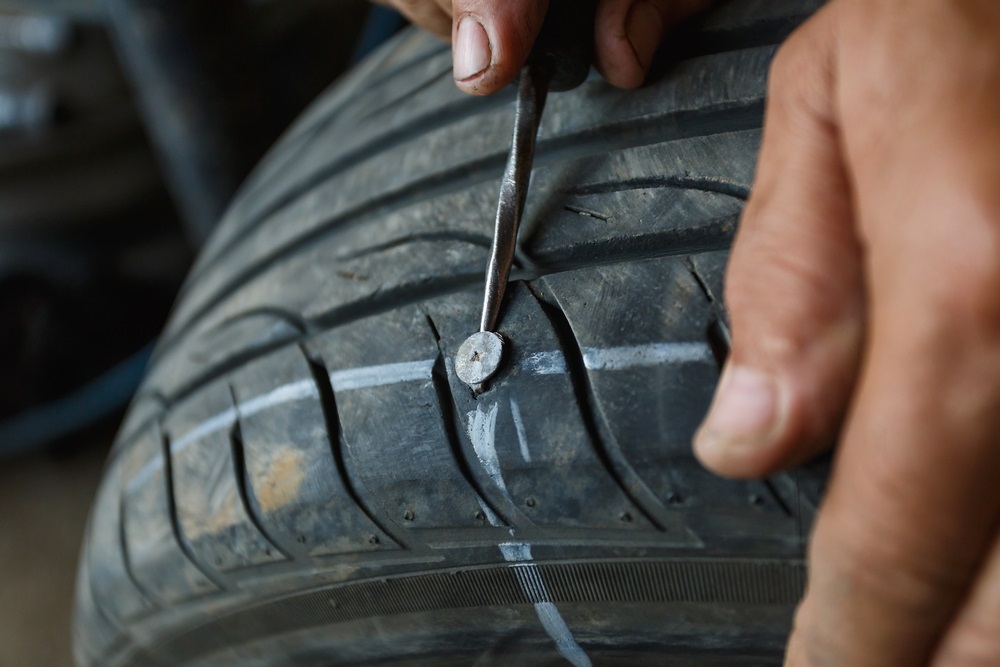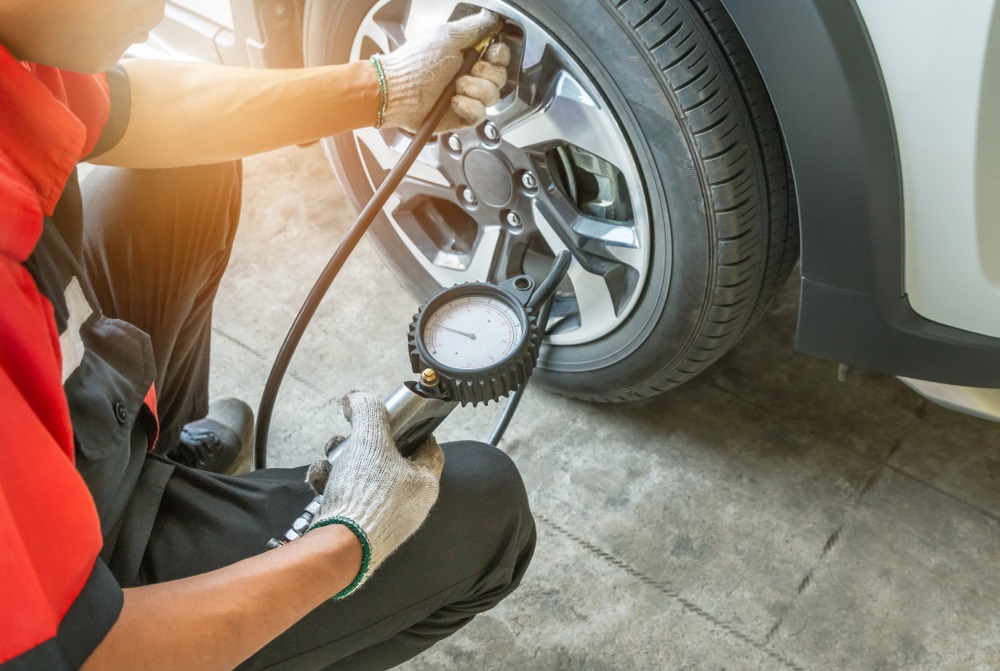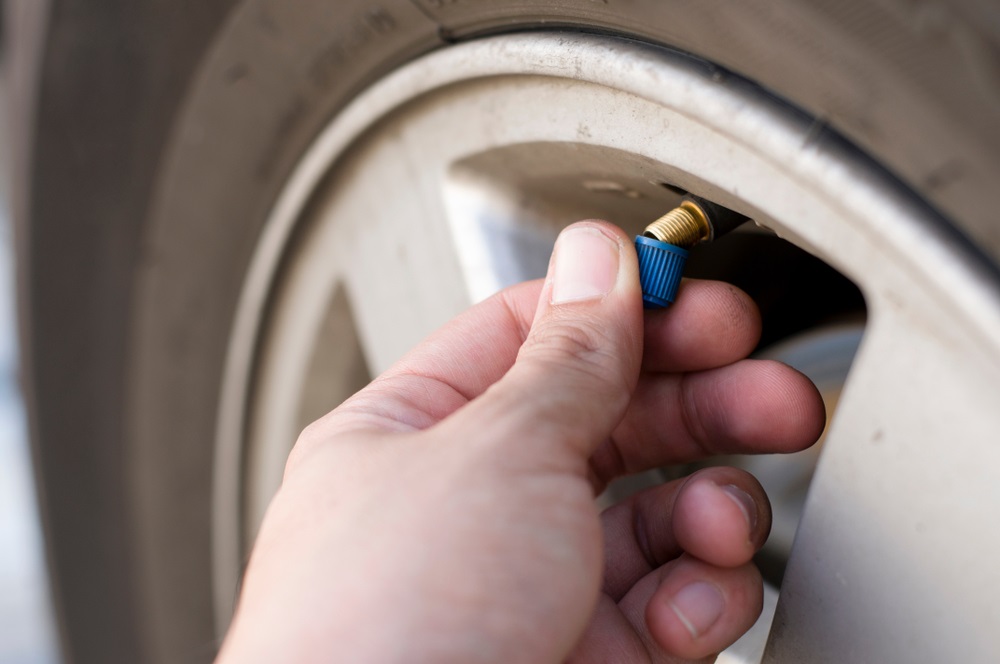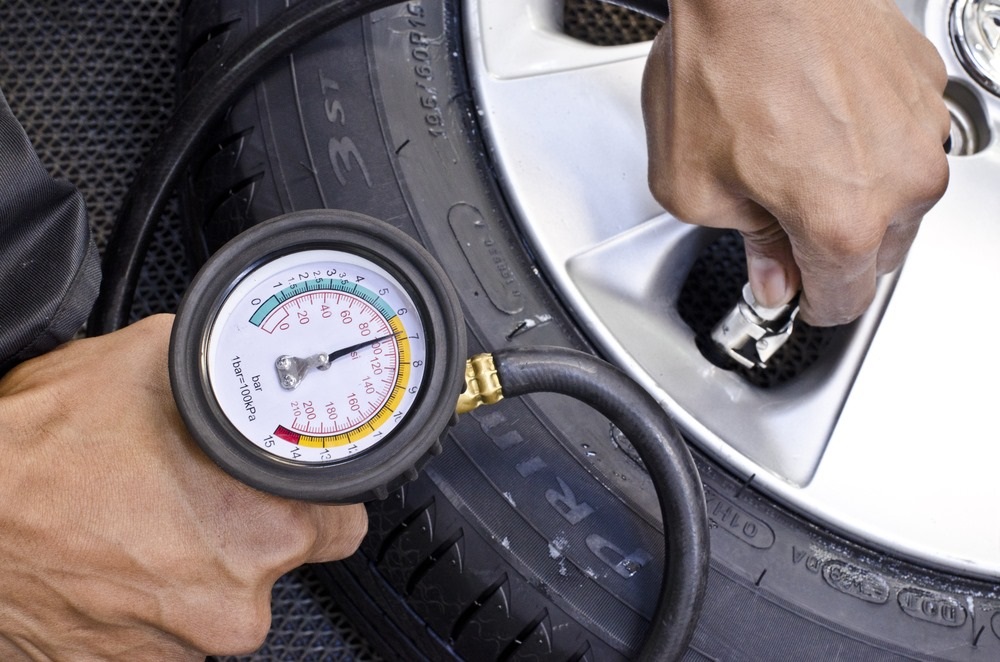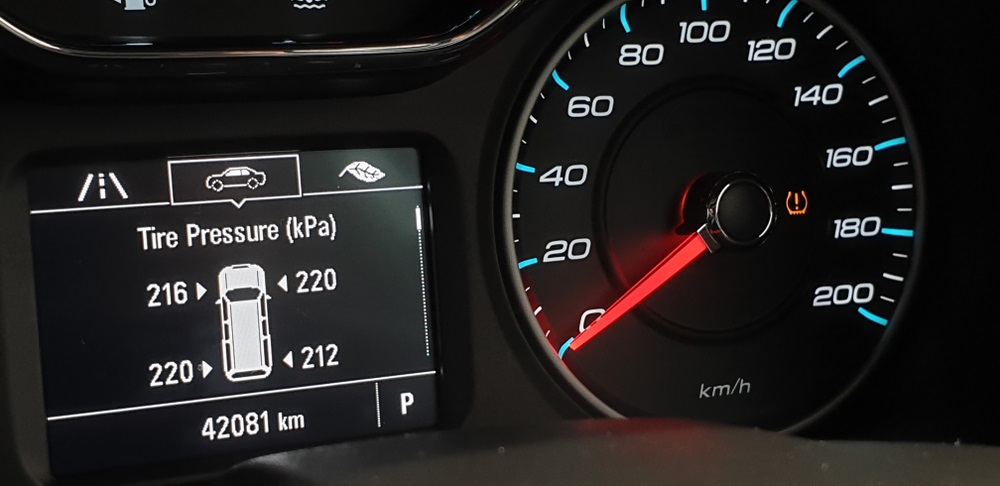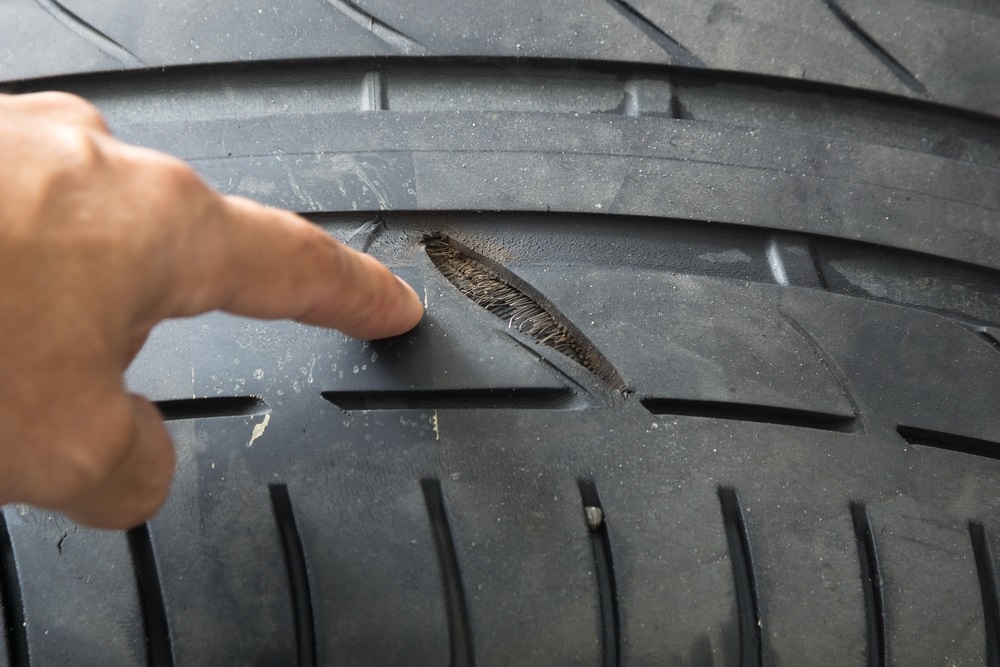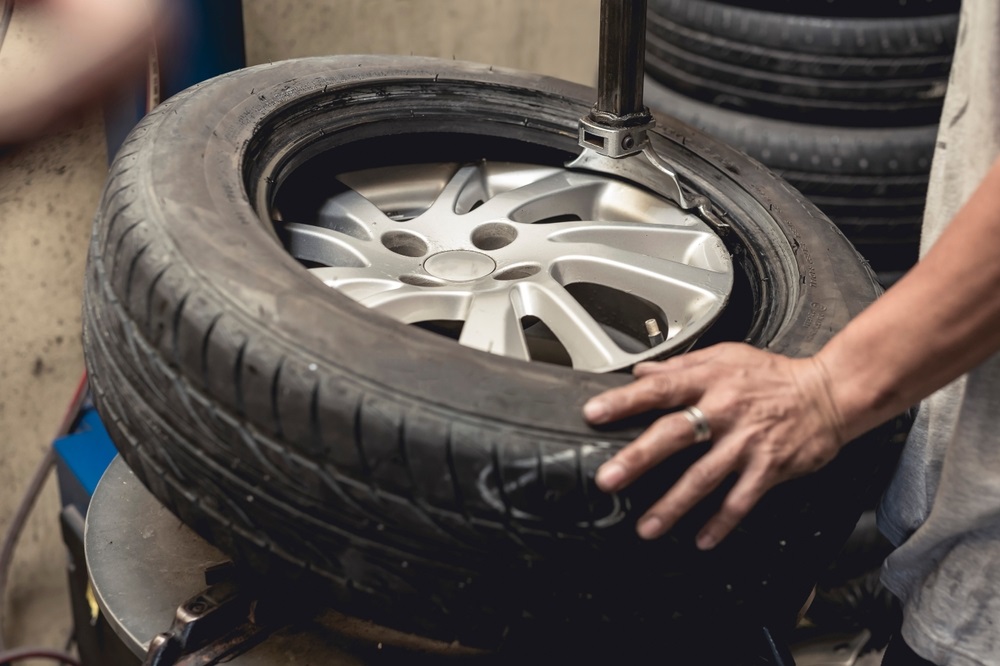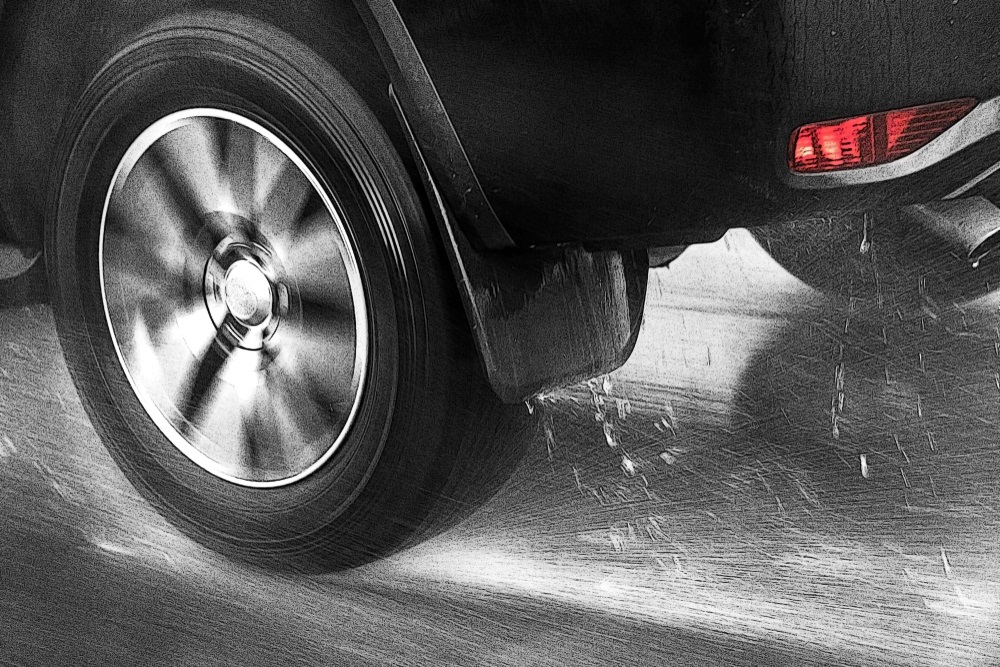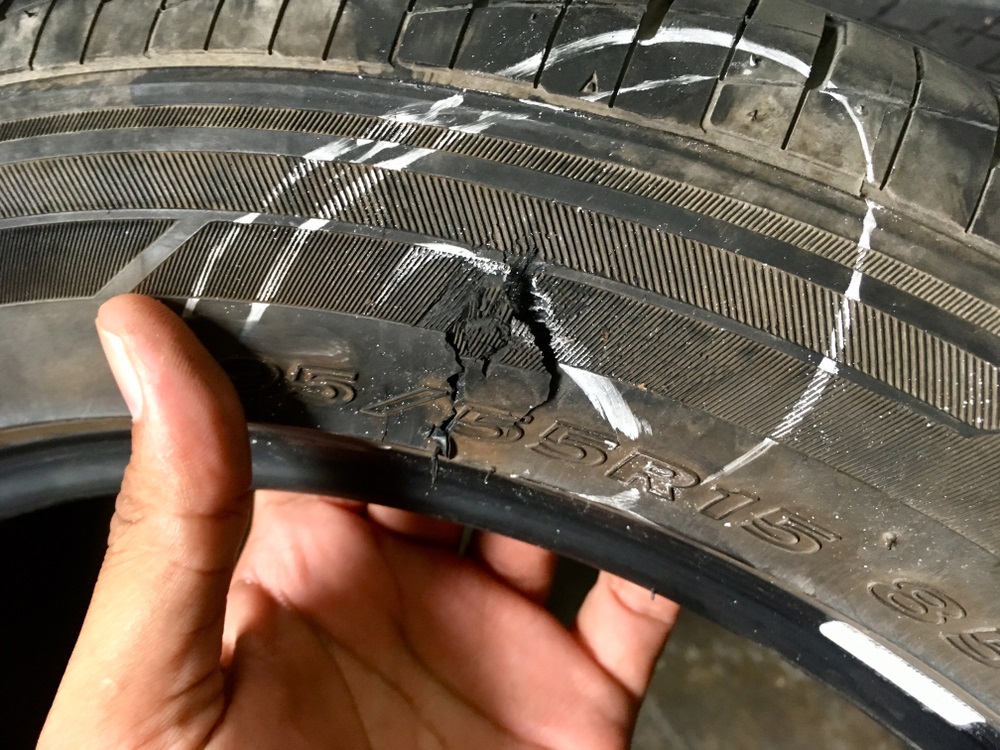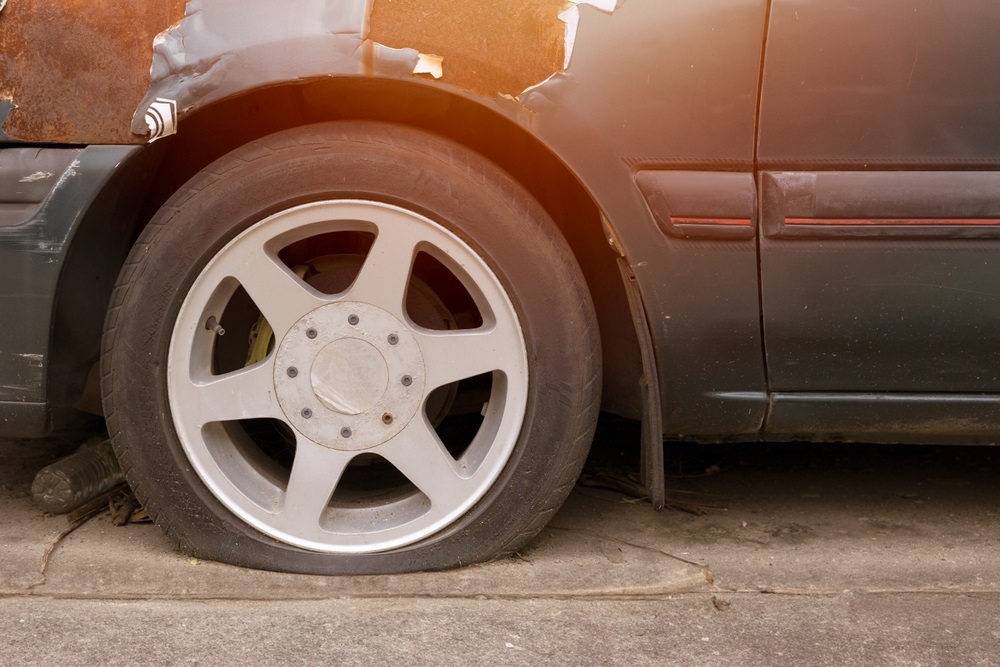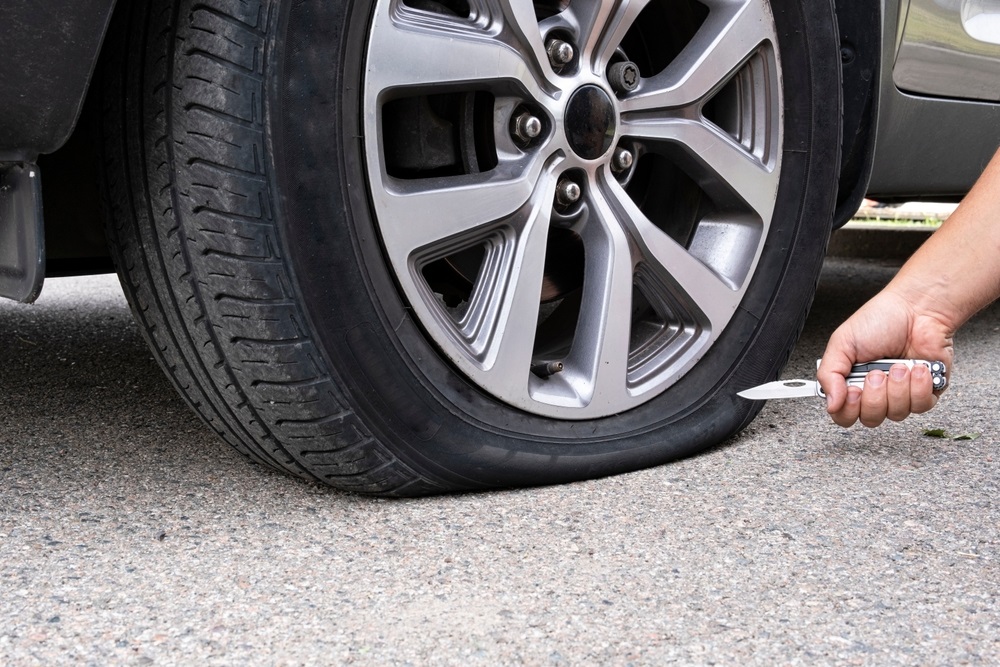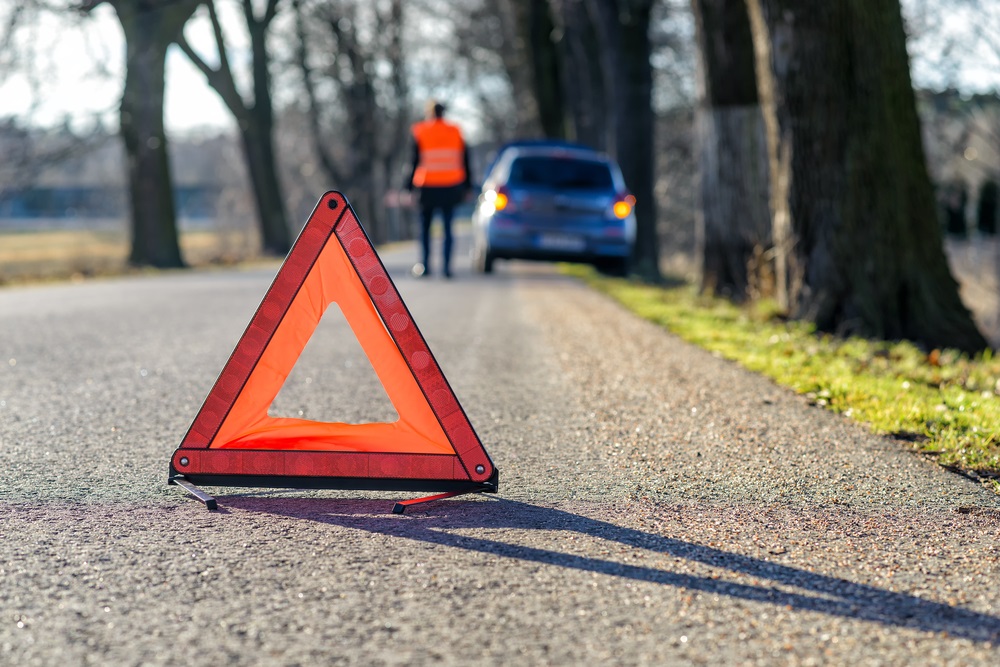Top 12 Common Causes of A Flat Tyre
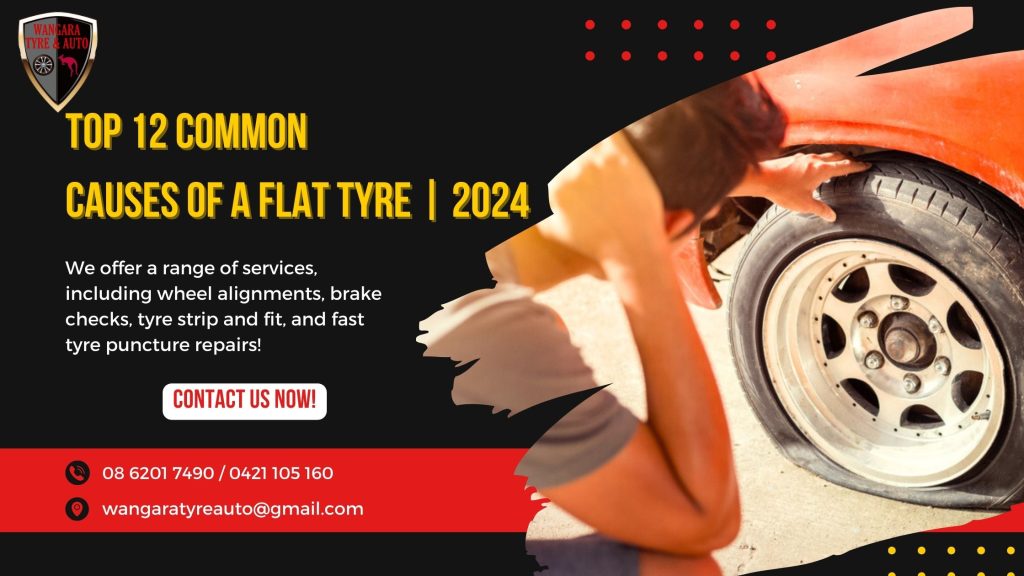
Ever found yourself on the side of the road dealing with a flat tyre? You know the frustration and potential danger it can bring!
Whether it happens during a late-night drive or in extreme weather conditions, flat tyres are not just inconveniences—they pose serious safety risks for drivers. These situations can worsen quickly, turning a routine trip into a hazardous trial. Flat tyres, unfortunately, are a common happening for drivers everywhere. However, they might seem unavoidable but proper tyre maintenance can significantly reduce the chance of experiencing them.
At Wangara Tyre Auto, we understand the importance of keeping your tyres in top condition to prevent flat tyres and ensure your safety on the road. That’s why we’ve put together a guide on the top 12 common causes of flat tyres with some proactive measures to avoid the chances of this troublesome situation about flat tyres.
Let’s explore the reasons and find out how you can protect yourself from the flat’s inconvenience and hazards!
12 Most Common Causes of a Flat Tyre
1. Tyre Punctures by Sharp Objects
One of the most frequent culprits behind flat tyres is punctures caused by sharp objects on the road. Nails, screws, glass shards – you name it, they can all find their way into your tyre and cause tyre punctures; a slow leak or an immediate blowout. It’s crucial to keep an eye out for debris on the road and avoid driving over suspicious items whenever possible.
2. Road Hazards or Foreign Objects
Besides sharp objects, road hazards like potholes, uneven surfaces, and debris are also the most prominent causes of tyre deflation. Impact with these hazards can cause damage to your tyre’s sidewall or tread, resulting in a loss of air pressure.
Staying vigilant while driving and steering clear of known trouble spots can help minimize the risk of encountering such issues.
3. Improper inflation / Under or Over-inflated tyres
Maintaining the correct tyre pressure is important for tyre health. Under-inflated tyres can lead to excessive heat buildup and premature wear, while over-inflated ones are prone to blowouts. Additionally, the separation of the tyre from the rim due to improper inflation can cause sudden loss of air pressure, leading to a flat tyre.
4. Damaged or Leaky Valve Stem
The valve stem is essential for maintaining proper tyre inflation. Damage to the valve stem, such as cracks or leaks, can result in air leaks and flat tyres. Inspecting and replacing damaged valve stems during routine tyre maintenance can prevent this issue.
5. Under or Over-Pumped Tyres/ Improper Tyre Pressure
Related to improper inflation, both under and over-pumped tyres can spell trouble. Under-pumped tyres are more susceptible to damage from road hazards, while over-pumped tyres can become rigid and prone to bursting under stress. Regularly checking and maintaining the correct tyre pressure is key to avoiding these issues.
6. Defective (Tyre Pressure Monitoring System) TPMS
Modern vehicles come equipped with TPMS to alert drivers of tyre pressure abnormalities. However, a malfunctioning TPMS can fail to warn you of low tyre pressure, increasing the risk of a flat tyre. Regular inspections of your TPMS system can help detect and address any defects early on.
7. Worn Down Tread
Worn-down tyre treads or tread separation can compromise tyre performance and safety. As the tread leaves the tyre the underlying rubber is exposed to sharp objects. Excessive wear can lead to reduced traction and an increased risk of punctures and blowouts. Regularly checking your tyre tread depth and replacing worn-out tyres can prevent flat tyres caused by tread issues.
8. Tyre Bead Leakage
The tyre bead is the part of the tyre that seals against the rim. Leakage in this area can result from damage or improper installation, leading to gradual air loss and flat tyres. Ensuring proper tyre mounting and inspecting for bead leaks during tyre maintenance can lessen this risk.
9. Regular or Poor Driving
Aggressive driving, frequent braking, and rough handling can accelerate tyre wear and increase the likelihood of flat tyres. Practising smooth driving habits and avoiding sudden moves can prolong tyre life and reduce the risk of flats.
10. Worn-out or Ripped Tire
Old or worn-out tyres are more susceptible to damage and failure. Cracks, cuts, or tears in the tyre sidewall or tread can lead to air leaks and flat tyres. Regularly inspecting tyre condition and replacing worn-out tyres can prevent flats due to tyre deterioration.
11. High Temperature or Extreme Weather Conditions
Extreme temperatures, especially heat, can affect tyre pressure and performance. Overheated tyres are more prone to blowouts and flat tyres. During hot weather, regularly checking tyre pressure and avoiding prolonged high-speed driving can prevent tyre-related issues.
12. Vandalism
Unfortunately, it’s regretful when someone purposely damages your tyres through vandalism, like puncturing or cutting them. It’s not just an inconvenience; it can mess up your plans and cost you time and money. To lower the chances of being a victim of this mishap, park your vehicle in safe, well-lit areas. Keep an eye out for any shady characters or unusual activities around your parked car.
How to Prevent a Flat Tyre | 8 Tips
Avoiding a flat tyre is easier than dealing with one on the road. Here are eight simple yet effective tips to keep your tyres in top condition and enjoy a smoother, stress-free ride. Let’s have a look!
1. Regularly Check Tyre Pressure
It’s important to maintain the correct tyre pressure for tyre health and longevity. Use a reliable tyre pressure gauge to check your tyre pressure at least once a month and before long trips. Refer to your vehicle’s manual or the placard located inside the driver’s door for the recommended tyre pressure.
2. Avoid Road Hazards
Be mindful of road hazards such as potholes, debris, and sharp objects. Whenever possible, consider knowing the trouble spots and driving cautiously to reduce the chances of impact damage that can lead to a flat tyre.
3. Inspect Tyres for Damage
It’s important to give your tyres a thorough check regularly. Look out for any signs of trouble like cuts, cracks, bulges, or punctures. These visible damages can weaken your tyre’s structure, making a flat tyre more likely.
4. Rotate Tyres Regularly
Rotating your tyres at recommended intervals promotes even wear and extends their lifespan. Uneven tyre wear can increase the likelihood of flats, especially if one tyre becomes significantly worn compared to the others.
5. Maintain Proper Wheel Alignment
Proper wheel alignment ensures that your tyres make uniform contact with the road surface, reducing uneven wear and the risk of flats. Schedule regular wheel alignment checks and adjustments as needed.
6. Drive Smoothly
Avoid aggressive driving behaviours such as sharp turns, hard braking, and rapid acceleration. Smooth driving reduces stress on your tyres and minimizes the risk of damage that can lead to flats.
7. Choose Quality Tyres
Invest in high-quality tyres from reputable brands known for durability and performance. Quality tyres are less prone to wear and damage, minimizing the likelihood of flats.
8. Install Tyre Pressure Monitoring System (TPMS)
Consider installing a TPMS if your vehicle doesn’t already have one. TPMS alerts you to changes in tyre pressure, allowing you to address low pressure before it leads to a flat tyre.
Flat Tyre: Signs and Safety Precautions
Signs of a Flat Tyre
- Loss of Air Pressure: The most obvious sign of a flat tyre is a noticeable loss of air pressure. If you notice that your tyre looks deflated or feels softer than usual, you likely have a flat tyre.
- Visible Damage: Inspect your tyre for visible damage such as cuts, tears, or punctures. These signs of damage can indicate a flat tyre or a tyre that is at risk of going flat.
- Vibration or Shaking: A flat tyre can cause your vehicle to vibrate or shake while driving. If you experience unusual vibrations, especially at higher speeds, it could be due to a flat tyre.
- Handling Issues: A flat tyre while driving can affect your vehicle’s handling, causing it to pull to one side or feel unstable. Pay attention to any changes in how your vehicle handles, as this could be a sign of a flat tyre.
9 Safety Tips to Change a Flat Tyre
- Pull Over Safely: When you suspect a flat tyre, safely pull over to a side of the road or a parking area. Avoid stopping on busy roads or in unsafe locations.
- Activate the Emergency Flashers: Turn on your emergency flashers or hazard lights to alert other drivers that you are having a tyre-related issue. Thus, it helps prevent accidents and ensure your safety.
- Stay Clear of Traffic: When exiting your vehicle, make sure to stay clear of oncoming traffic. Exit on the side away from traffic if possible, and keep a safe distance from the road.
- Engage the Parking Brake: Before lifting the vehicle, apply the parking brake to prevent any movement. It’s an extra layer of safety when you work on changing the tyre.
- Use Parking Blocks: If available, use parking blocks or chocks to prevent your vehicle from rolling while changing the tyre. This adds stability to the whole process.
- Place Safety Markers: Place safety markers behind your vehicle and on the road to alert oncoming traffic of the tyre change operation. This helps create a safe buffer zone and reduces the risk of accidents.
- Inspect Spare Tyre: If you have a spare tyre, ensure that it is in good condition and properly inflated. Familiarize yourself with the process of changing a tyre in case of emergencies.
- Follow Manufacturer’s Procedures: Consult your car’s manual for specific procedures and warnings related to changing a tyre. Each vehicle may have unique instructions and safety precautions to follow during tyre replacement.
- Call for Professional Help: If you’re unable to change a flat tyre yourself or if you’re in an unsafe location, call for roadside assistance. Professional help can safely replace the flat tyre and get you back on the road.
Need to change a flat tyre?
Call Wangara Tyre Auto | Get Quick Flat Tyre Service Now!
Our expert team is ready to provide you with prompt and reliable flat tyre service. Whether you need a tyre repair, replacement, or any other tyre-related service, we’ve got you covered.
At Wangara Tyre Auto, we offer a comprehensive range of services, including wheel alignments, essential servicing, brake checks, tyre strip and fit, and fast tyre puncture repair service. Our experienced technicians ensure that your vehicle is back on the road safely and swiftly, so you can continue your journey with peace of mind.
Don’t let a flat tyre slow you down!
Call us at 08 6201 7490 or 0421 105 160 for quick and professional flat tyre service now!

